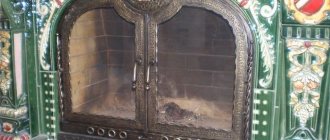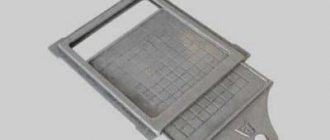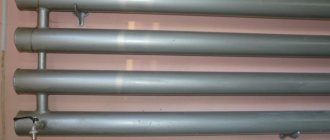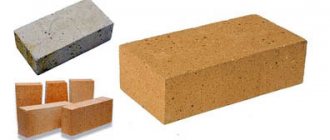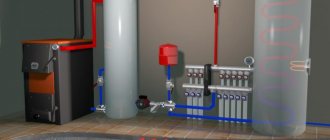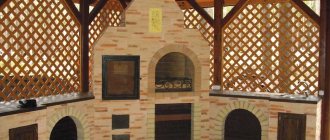Areas of use
The scope of application of varnishes that are resistant to high temperatures is not limited to the processing of brick structures. They can act as the only element of decorative treatment of the heating structure, or as part of it.
Heat-resistant varnish treatment is used over the following materials:
- Artificial and natural stone,
- Brickwork,
- Metal surfaces,
- Ceramic tile,
- Plastered surfaces.
In addition, stove varnish is also used in the treatment of wooden surfaces. Kiln varnish parameters
The composition of heat-resistant varnishes for fireplaces and stoves is based on organosilicon resins diluted in a mixture of light hydrocarbons (solvent). In addition, they contain various additives that improve performance, and dyes to give the varnish the required color.
The varnish is applied in two layers; its overall consumption is strongly influenced by the porosity of the surface being coated.
Among the main characteristics of the varnish are the following parameters:
- The temperature withstand level is approximately 200 - 250 degrees.
- The varnish has a protective effect on the coated surface from moisture and aggressive chemical environments.
- The use of varnish is acceptable when finishing both indoor and outdoor structures.
- It has a high drying speed, about 30-60 minutes.
- The composition is well absorbed into the surface being treated and has high adhesion.
These parameters make varnish for fireplaces and stoves a very popular means of decorative and protective treatment of the surfaces of heating structures.
How to paint brickwork
There are plenty of options for painting a brick surface:
- Lime or chalk compounds;
- Coloring varnish for bricks and mixtures based on it;
- Water-based compositions.
Multi-color painting will help hide individual defects in a brick or plastered surface. If you paint the plaster with monochrome paint, then all the surface flaws - cracks, bumps and heaving of the water-based paint will be clearly visible. At the same time, any simple drawing will hide cracks and places where paint has faded. If desired, you can paint or paint with water-based paint the old brickwork so that it looks like a new facing one.
Characteristics of varnish brand KO - 85
This brand of heat-resistant varnish, in addition to being used for coating stoves and fireplaces, is even used in industry. It is used to process thermal lines, as well as elements of various types of structures that are subject to heating.
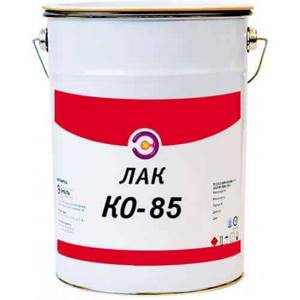
After applying KO-85 varnish, a uniform brownish film is formed on the surface
In addition to silicone resins, it contains a solvent. This composition determines its following properties:
- Increased heat resistance. The coating made with this varnish does not lose its characteristics even when the temperature reaches 300 degrees Celsius.
- Wide range of operating temperatures and high resistance to temperature changes. The varnish can be used at temperatures from -30 to 300 degrees Celsius.
- Resistance to peeling after long service life.
- Regardless of the conditions, the varnish is easy to apply as it maintains a uniform consistency.
- Varnish can be applied in a variety of ways, from brush and roller to spray.
After application, a uniform brownish film is formed on the surface, without changes in color over the entire coating area.
Heat-resistant paints, or a reasonable balance of durability and aesthetics

If you are not bothered by the fact that any paint is a chemical, and therefore has some kind of harm to health (even imperceptible), then opt for paint. True, you need to clearly understand what kind of paint...
- The first thing you need to pay attention to when choosing a material for painting a Russian stove is heat resistance.
- Synthetic compositions, for example, pentaphthalic paints, nitro paints, etc., can withstand heating up to 80°C. An almost ideal option is silicon-organic enamels, which can withstand extremely high temperatures, but their price is quite high.
- Oil paints based on drying oil at high temperatures change their color to darker . Moreover, this does not happen evenly, but in spots.
- Remember that a rough surface transfers heat better than a perfectly smooth surface. Also, heat transfer rates will be higher for a dark-colored structure. Another thing is that not everyone will like a black stove, and it is quite difficult to fit it into the interior design.
- Aluminum dyes are also not suitable for bricks.
- If you are not satisfied with the variety of colors among the paints recommended for a brick oven, pay attention to latex compounds that are applied over a special primer with a rough texture. Latex compounds are very elastic: at high surface temperatures they expand, but then return to their original form.
Characteristics of varnish brand KO - 815
This representative of heat-resistant varnishes is resistant to open flames. It can be used in even higher temperature conditions than KO-85 varnish. In this regard, it can be used to cover the internal furnace space lined with fireclay bricks.
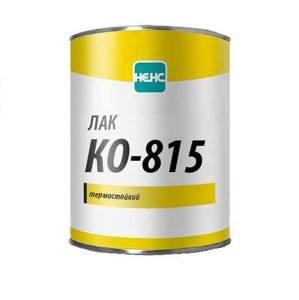
Unlike KO-85, KO-815 varnish is suitable for higher temperatures
This composition has the following performance properties:
- The operating temperature range of this composition ranges from -60 to 500 degrees Celsius. This makes its scope of application much wider than that of KO-85.
- The required thickness of the applied layer ranges from 20 to 40 micrometers. This has a positive effect on the varnish consumption; it is about 110 grams per square meter, provided that the porosity of the surface being treated is low.
- Requires the use of a hot method for hardening. That is, in order for the varnish to acquire optimal performance qualities, it is necessary to dry it using infrared radiation.
- In liquid form, the substance belongs to the third class of fire hazard.
Craftsmen recommend applying heat-resistant varnishes for stoves and fireplaces made of bricks in several layers. In this case, each of them must dry completely before applying the next one.
Reasons for coloring
Painting a brick stove located in the house is necessary for a number of the following reasons:
- To give the stove surface an aesthetically attractive appearance and its full combination with the interior of the room in which it is located. Thanks to its coloring, you can create home comfort and noticeably transform the room.
- To prevent the occurrence of cracks and increase in size of existing ones. In many cases, minor defects can be completely eliminated using them.
- After painting, the surface of the oven becomes smoother.
- To increase heat transfer.
- For protection against various harmful microorganisms. When coated with a properly selected coloring composition, it is possible to prevent the occurrence of fungus, mold and other bacteria dangerous to human health on the stove surface.
- To increase the service life. A stove with a protective layer can be used much longer than one without it.
Taking into account all the listed reasons and advantages that appear as a result of treating the stove surface, painting it is not only possible, but also necessary.
Recommendations for applying heat-resistant varnishes
To achieve maximum coating quality, it is recommended to apply varnish for a fireplace or stove in compliance with a number of rules:
- Despite the large estimated temperature range suitable for applying varnish, it is recommended to primarily use it at an air temperature of about 15-20 degrees Celsius.
- The varnish should be carefully moved by hand before use.
- The surface to be coated must be carefully prepared: cleaned of dust and degreased. The varnish is applied to a dry surface.
- The most effective way to varnish small parts is to dip them entirely in varnish.
- Processing highly porous coatings requires a more thorough coating, at least three layers.
- It is allowed to use varnish not only for brick heating structures. It can also be used to cover all-metal stoves and fireplaces.
- The varnish should be stored in a cool place, out of reach of sunlight, in compliance with fire safety rules. In liquid form, the varnish is flammable.
- To prevent coating heterogeneity, it is not recommended to use varnishes from different manufacturers, even if they are identical in characteristics.
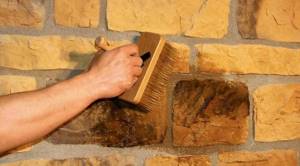
Mix the varnish thoroughly before use.
By following these simple recommendations when using varnish, you will be able to achieve maximum efficiency in using heat-resistant coatings.
Rules for safe operation
To avoid the negative consequences of using paints and varnishes, it is necessary to comply with a number of requirements for safe handling:
- Do not allow varnish to come into contact with the surface of the skin, and especially the mucous membranes. To do this, you need to use protective equipment (gloves, masks, etc.). If contact with the body surface cannot be avoided, it is necessary to immediately rinse the affected areas with plenty of water.
- Due to the fire hazard of the varnish, it is prohibited to use or store it near open flame sources until it dries.
- Due to the toxicity of paints and varnishes, work should only be carried out in a well-ventilated area. And even if this condition is met, it is advisable to use devices for respiratory protection.
- In case of varnish fire, you should always have fire extinguishing agents on hand. Foam-based fire extinguishers or regular sand are best suited for this purpose.
How to paint stoves
The application of heat-resistant varnish has a lot of subtleties, so many owners of private houses leave such work to professionals. If you wish, you can carry out all the preparatory work yourself. First of all, it is necessary to thoroughly clean the surface of the oven from any contaminants.
If the work is carried out manually, it is best to use a metal brush, as well as a soap solution, which allows you to remove not only dust, but also deep dirt.
If there are deep oily stains on the surface of the brickwork, you can use aggressive cleaning agents, but then be sure to rinse the brickwork thoroughly with clean water.
Thorough pre-cleaning is only the first stage in preparing the surface for application of a primer or special impregnation. For most types of paints and varnishes that are resistant to elevated temperatures, the application of special primers and impregnations is very important. These substances allow you to create excellent adhesion between the brick oven and the varnish. Without applying special compounds, the varnish may soon begin to peel off.
Making oven varnish at home
It is possible to make oven varnish yourself. From a technological point of view, this process is quite simple. For preparation, you only need two components: wood tar and iron sulfate (iron sulfate 2). Both substances are common enough to be easily found.
The production proportions are as follows: one liter of tar will require 50 grams of iron sulfate. To prepare the varnish, you need to bring the tar to a boil; it is recommended to do this outdoors. After boiling, vitriol is added to the tar and the mixture is thoroughly mixed. A special feature of using this varnish is its use in heated form, immediately after preparation. The surface to be treated must also be heated.
Thus, coating with heat-resistant varnishes is an excellent option for treating a stove or fireplace in the most economical way. At the same time, the appearance of the treated surface looks decent and pleases the eye. In addition, the use of varnish is not necessarily an alternative to other methods of decorating heating devices. It can be combined with almost all facing materials, which is why they only benefit in quality and beauty.
